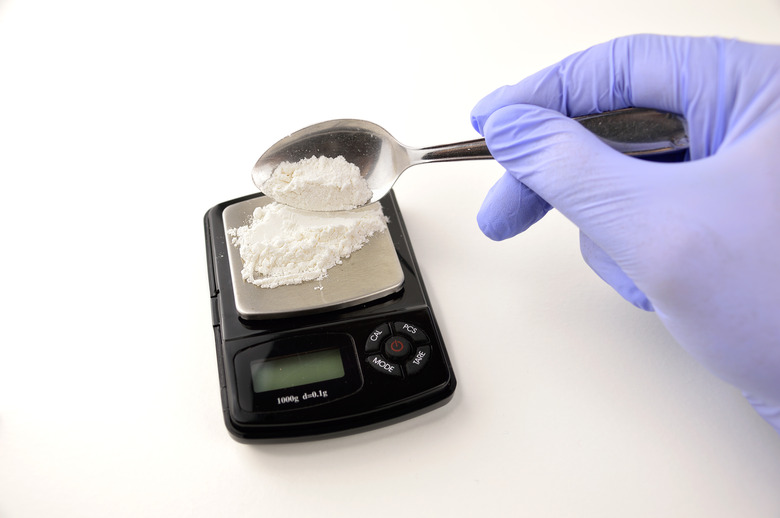How To Find Fractional Abundance Of An Isotope
Each element in the periodic table has a unique number of positively-charged protons in its nucleus, but the number of neutrons, which have no charge, can vary. Atoms of an element with different numbers of neutrons are isotopes of that element. All but 20 elements have more than one naturally occurring isotope, and some elements have many. Tin (Sn), with 10 natural isotopes, is the winner in this category. Neutrons have the same mass as protons, so different isotopes have different atomic masses, and the atomic weight of an element listed in the periodic table is an average of each isotope multiplied by its abundance.
Atomic weight = ∑ (atomic mass x relative abundance)
It's possible to mathematically calculate fractional abundances for elements with two isotopes based on the atomic masses of the isotopes, but you need lab techniques for elements with more than two.
TL;DR (Too Long; Didn't Read)
If an element has two isotopes, you can find their fractional abundances using math. Otherwise, you need a mass spectrometer.
Calculating Relative Abundances of Two Isotopes
Calculating Relative Abundances of Two Isotopes
Consider an element with two isotopes of masses m1 and m2. Their fractional abundances must add to equal 1, so if the abundance of the first is x, the abundance of the second is 1 – x. This means
Atomic weight = m1x + m2(1 – x).
Simplifying and solving for x:
x = (Atomic weight – m2) ÷ (m1 – m2)
The quantity x is the fractional abundance of the isotope with mass m1.
Sample Calculation
Sample Calculation
**Chlorine has two naturally occurring isotopes: 35Cl, with a mass of 34.9689 amu (atomic mass units) and 37Cl, with a mass of 36.9659 amu. If the atomic weight of chlorine is 35.46 amu, what are the fractional abundances of each isotope?**
Let x be the fractional abundance of 35Cl. According to the equation above, if we let the mass of 35Cl be m1 and that of 37Cl be m2, we get:
x = (35.46 – 36.9659) ÷ (34.9689 – 36.9659) = 0.5911/1.997 = -1.5059/-1.997 = 0.756
**The fractional abundance of 35Cl is 0.756 and that of 37Cl is 0.244.**
More than Two Isotopes
More than Two Isotopes
Scientists determine relative abundances of elements with more than two isotopes in the lab using a technique called mass spectrometry. They vaporize a sample containing the element and bombard it with high-energy electrons. This charges the particles, which are them directed through a magnetic field that deflects them. The heavier isotopes get deflected more than the lighter ones. The spectrometer measure the mass-to-charge ratio of each isotope it detects as well as measuring the numbers of each and displaying these as a series of lines, called a spectrum. The spectrum is like a bar graph that plots mass-to-charge ratio against relative abundance.
Cite This Article
MLA
Deziel, Chris. "How To Find Fractional Abundance Of An Isotope" sciencing.com, https://www.sciencing.com/fractional-abundance-isotope-2874/. 17 May 2018.
APA
Deziel, Chris. (2018, May 17). How To Find Fractional Abundance Of An Isotope. sciencing.com. Retrieved from https://www.sciencing.com/fractional-abundance-isotope-2874/
Chicago
Deziel, Chris. How To Find Fractional Abundance Of An Isotope last modified March 24, 2022. https://www.sciencing.com/fractional-abundance-isotope-2874/
